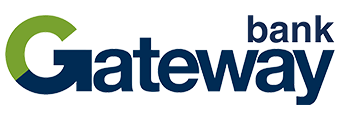Mr Sukkar's comments come after Treasury revealed just over 11,000 applications have been received for HomeBuilder in four months, as of 9 October.
The government has budgeted approximately 27,000 applications, currently due by the end of the year, at a cost of $688 million.
"The figures show HomeBuilder is off to a much stronger start than forecast. Given the construction industry’s long project lead times this level of applications was not expected until November," Mr Sukkar said.
"Every HomeBuilder application represents a signed contract, which means more work in the pipeline, keeping our tradies on-site, on the tools and in a job."
Mr Sukkar cited the Australian Bureau of Statistics' (ABS) dwelling approvals for private housing data for August, up 12.4% on the year, as a marker for the program's success.
However, this is boosted by Western Australia (up 35%), which has its own 'HomeBuilder' program, and had just 466 federal HomeBuilder applications.
Building a home? The table below features construction home loans with some of the lowest variable interest rates on the market.
| Lender | Home Loan | Interest Rate | Comparison Rate* | Monthly Repayment | Repayment type | Rate Type | Offset | Redraw | Ongoing Fees | Upfront Fees | Max LVR | Lump Sum Repayment | Extra Repayments | Split Loan Option | Tags | Features | Link | Compare | Promoted Product | Disclosure |
|---|---|---|---|---|---|---|---|---|---|---|---|---|---|---|---|---|---|---|---|---|
5.93% p.a. | 6.19% p.a. | $2,471 | Interest-only | Variable | $0 | $530 | 90% |
| Promoted | Disclosure | ||||||||||
5.69% p.a. | 5.71% p.a. | $2,899 | Principal & Interest | Variable | $0 | $350 | 80% | Disclosure | ||||||||||||
5.94% p.a. | 6.00% p.a. | $2,475 | Interest-only | Variable | $0 | $835 | 90% | |||||||||||||
6.24% p.a. | 6.31% p.a. | $2,600 | Interest-only | Variable | $0 | $450 | 80% | |||||||||||||
6.44% p.a. | 6.41% p.a. | $2,683 | Interest-only | Variable | $0 | $530 | 90% | |||||||||||||
6.74% p.a. | 7.51% p.a. | $2,808 | Interest-only | Variable | $20 | $644 | 90% | |||||||||||||
7.89% p.a. | 8.22% p.a. | $3,631 | Principal & Interest | Variable | $0 | $0 | 75% | |||||||||||||
7.19% p.a. | 6.90% p.a. | $2,996 | Interest-only | Variable | $0 | $1,212 | 90% | |||||||||||||
8.18% p.a. | 8.25% p.a. | $3,732 | Principal & Interest | Variable | $0 | $900 | 80% | |||||||||||||
5.94% p.a. | 6.36% p.a. | $2,978 | Principal & Interest | Variable | $395 | $null | 95% | |||||||||||||
5.18% p.a. | 5.63% p.a. | $2,739 | Principal & Interest | Variable | $350 | $0 | 90% |
Total private dwellings approved - which includes apartments - is up just 0.6% on the year as of August, dragged down by apartment/unit approvals (-11%).
On the month (July 2020 vs August 2020), total dwellings approved are down 1.6%, while private sector housing is up just 4.8%.
For broader building activity, findings from the ABS for the June quarter recorded a 1.7% fall in new private sector housing construction commenced, when compared to the corresponding 2019 quarter.
Australia-wide figures were still "below expectations" according to Westpac's economics team.
“Results were broadly driven by volatility in NSW, which posted a 14.2% decrease in August after approval delays associated with the initial lock-down led to a 32% increase in July,” they said.
“Nationally, a significant 11% fall in apartment approvals partially offset a 23% rise in July, unsurprising given the bundling of approvals causing month-to-month volatility."
Property Council of Australia chief executive Ken Morrison said the program has caused a "big lift" in residential development sentiment.
"HomeBuilder is the pop star of government stimulus measures released so far – highly effective, immediate and good value for money," he said.
There was an uptick in construction job vacancies in August, when compared to May, with nearly double the amount of vacancies (15,900, as opposed to 8,300).
However, construction wages are flat, with ABS' wage index for that sector sliding for the third straight quarter.
ANZ senior economist Felicity Emmett has labelled construction sentiment "very weak" still, with HomeBuilder "prevent[ing] the worst".
Ms Emmett flagged a depressed rental market and slow population growth as prevailing headwinds.
In regards to new builds, Grattan Institute's Brendan Coates called HomeBuilder "bad economics".
"Stiff competition among prospective buyers of homes selling below the $750,000 price cap will force up the prices of those homes. That’s a big win for developers selling house-and-land packages on the urban fringe," Mr Coates wrote in The Conversation in June.
"Perhaps the best that can be said for the scheme is that it probably won’t cost much."
How HomeBuilder is being spent
According to the latest Treasury statistics, HomeBuilder is being used for new builds, more than for renovations, at a ratio of nearly 4-to-1.
Across all the states, 8,884 applications were made for new builds, while just 2,483 were used for renovations.
The renovations criteria is strict, with maximum incomes allowable being $125,000 for singles, or $200,000 for a couple, and renovators must spend a minimum of $150,000 to get the $25,000 bonus.
HomeBuilder also cannot be used for additions such as pools, sheds or the like - it must be on the home, such as a new bathroom or kitchen.
Out of the states, Victoria has outpaced others, with 4,176 total applications.
The Northern Territory has the fewest at just 29, while Western Australia's construction restrictions has seen just 466 applications.
In the West, the state revenue office only accepts applications once the first "construction milestone" is achieved, which for new builds is when foundations have been laid.
This is further along the line than other states, which pay the grant when a sales or building contract is signed.
However, the extra roadblock is not represented in ABS dwelling approval data, with WA leading the states in August, up 33.8%.
This brings approval data to levels not seen since 2018, according to Housing Industry Association (HIA) economist Angela Lillicrap.
"Western Australia also had a very short pipeline of work and these approvals will lead to the commencement of building work on the ground within weeks," she said.
HIA new home sales data for September 2020 saw a 49.8% uptick compared to June 2020, however this could be attributed to the 'spring selling season'.
See Also: Four months on, is HomeBuilder working?

Ready, Set, Buy!
Learn everything you need to know about buying property – from choosing the right property and home loan, to the purchasing process, tips to save money and more!
With bonus Q&A sheet and Crossword!











.jpg)